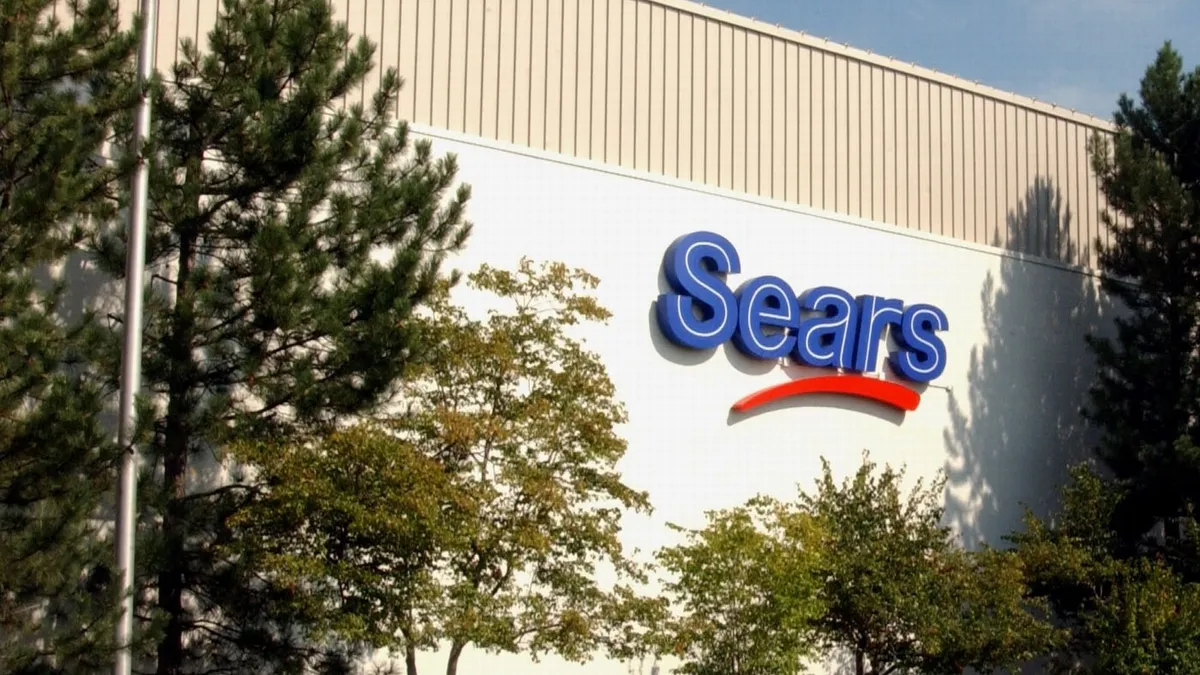Dive Brief:
- Sears Holdings CEO Eddie Lampert on Sunday delivered a proposal through his hedge fund, ESL Investments, to the ailing retailer that the firm said would free up $33 million a year in cash interest, $1.2 billion in liquidity over two years and cut $1.1 billion in upcoming debt in exchange for various asset sales, according to a securities filing.
- The proposal would trade debt for equity or new debt for certain groups of second-lien and unsecured debtholders, according to the filing. Proposed real estate sales to a potential consortium — which ESL said it is "prepared to lead or participate in" — would eliminate some $1.5 billion of real estate debt. Under the proposal, the consortium would then lease back Sears' store properties to the retailer.
- Sears currently "faces significant liquidity constraints," with $134 million in debt coming due Oct. 15, ESL said in its proposal. Given Sears' near-term liquidity issues, "we believe that substantial progress must be made on the transactions described in this proposal or any other proposal that Sears may pursue without delay," ESL said. In a press release, Sears said it has referred the transaction to a special committee considering other ESL-related transactions, including the possible sale of the Kenmore brand.
Dive Insight:
Lampert's proposal follows a seemingly unending series of moves by the CEO to keep Sears out of bankruptcy while furthering complicating the retailer's financial relationship with Lampert and his hedge fund. The proposal represents the most ambitious move so far this year in terms of reducing debt and freeing up cash, especially if combined with the sale of Sears' Kenmore and home services units to ESL.
And not without reason. The Wall Street Journal, citing an unnamed source, reported that Lampert "wants to restructure Sears's debt without filing for bankruptcy protection, because he views bankruptcy as risky for retailers." (The Journal cited Toys R Us' disastrous trip through bankruptcy as a prime example of a retailer intending to reorganize but falling into liquidation.) Lampert "also believes Sears can get more value for its assets by selling them while it is a going concern," the Journal also noted.
There's just two potential problems with ESL's proposal: It might not fix all of Sears' balance sheet issues, and it does nothing to solve Sears' other existential crisis, namely ceaseless sales declines.
On the first count, analysts with Fitch ratings said in a note Monday that ESL's proposal, which aims to reduce Sears' total debt from $5.6 billion to $2.4 billion, was "insufficient to avoid further restructuring." "Even if the restructuring as proposed — which Fitch views as challenging to execute — goes through, the company will continue to require significant liquidity injection given operating headwinds," Fitch analysts led by Managing Director Monica Aggarwal said in the note.
Aggarwal added that Fitch estimates Sears needs more than $600 million a year in liquidity, as they expect the retailer's EBITDA (earnings before interest, taxes, depreciation and amortization) to be negative $500 million to $600 million for now, and Sears still has $88 million in interest expenses, not to mention "any modest working capital/capex needs."
Sears' struggle to reverse endless declines in its sales base is arguably the retailer's bigger problem in the long run. GlobalData Retail Managing Director Neal Saunders said in comments emailed to Retail Dive that ESL's proposal "represent[s] a stepping up of the mission to resolve the company's financial woes," but that the firm doesn't believe it's a sustainable solution.
"As usual, Sears is focusing on financial maneuvers and missing the wider point that sales remain on a downward trajectory," Saunders added. "In our view, this is because both Sears and Kmart are suffering from chronic underinvestment and a lack of clarity in terms of their proposition. … Without revenue growth, Sears will remain a company at risk."















